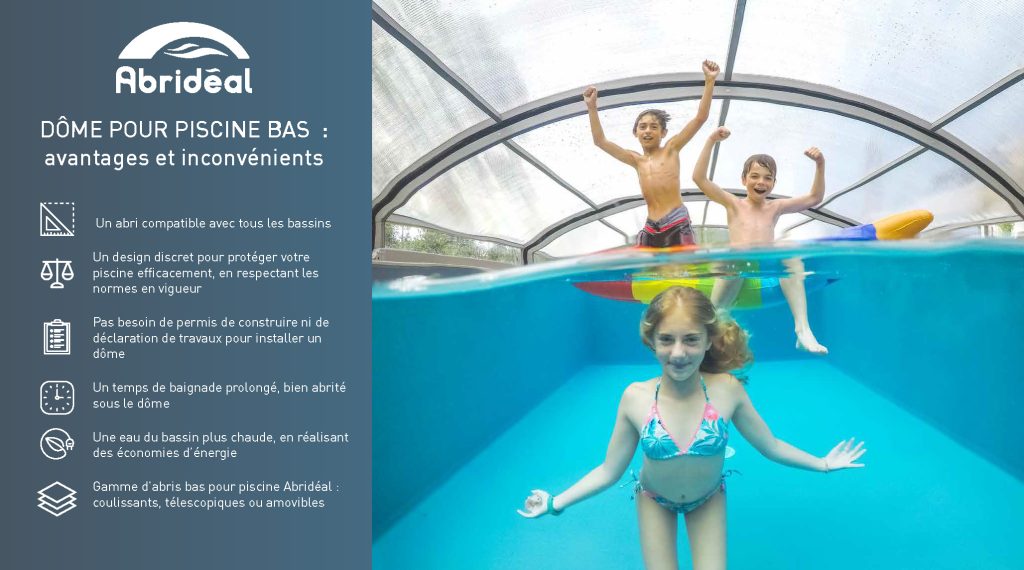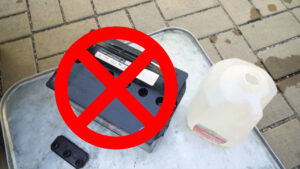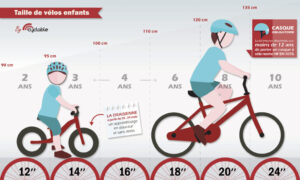Pool enclosures offer many advantages, such as protection from the elements and debris, longer bathing seasons and greater safety. However, they also have disadvantages, such as high installation and maintenance costs, as well as reduced natural sunlight. It's important to weigh up these factors before deciding to install a pool enclosure.
💦 Catch green water - Clean green pool
[arve url="https://www.youtube.com/embed/jZ9NIl3pD4U "/]
Why install a pool enclosure?
Installing a pool enclosure offers many advantages:
1. Weather protection : A pool enclosure offers effective protection against the elements, including rain, wind, snow and fallen leaves. It extends the swimming season by creating a safer, more pleasant environment.
2. Increased safety : Installing a pool enclosure considerably reduces the risk of accidents, especially for small children. The cover can be locked to prevent unsupervised access to the pool.
3. Energy savings : Thanks to its natural greenhouse effect, a pool enclosure keeps the water at an ideal temperature, which in turn reduces the need for heating systems. This translates into significant savings on your energy bill.
4. Less maintenance: By protecting your pool from outside elements such as leaves and insects, a pool enclosure reduces the maintenance required to keep the water clean and clear. What's more, it also limits water evaporation, which means less frequent refilling.
5. Aesthetic enhancement : A pool enclosure can also help improve the overall aesthetics of your outdoor space. With different designs and materials available on the market, you can choose an enclosure that blends harmoniously with your surroundings.
In conclusion, Installing a pool enclosure offers many practical, economic and aesthetic advantages. It extends the swimming season, ensures user safety, saves energy and reduces the maintenance required to keep the pool clean.
What type of pool enclosure should I choose?
When it comes to choosing a pool enclosure, it's important to take certain factors into account to find the best option. Pool enclosures can be of different types, such as flat shelters, low shelters, mid-high shelters and high shelters.
Flat shelters are generally the least expensive and most discreet, but offer less space for swimming. They are suitable for smaller pools or for those who prefer a minimalist aesthetic.
Low shelters offer more space for swimming and allow you to enjoy the pool even in bad weather. They are also easier to install and maintain. However, they can reduce the space available in the garden and are not suitable for large pools.
Half-high shelters are a compromise between low and high enclosures. They offer more space for swimming, while being more discreet than high enclosures. They are ideal for people who want to use their pool for longer periods of the year.
High shelters offer the most space for swimming and create a real extra room around the pool. They offer excellent thermal insulation and effectively protect the pool from external impurities. However, they are more expensive and more complex to install.
It's also important to take into account other criteria such as safety, ease of use and maintenance, as well as the standards in force in your region. We recommend that you consult a pool enclosure professional for advice tailored to your needs and budget.
In conclusion, each type of pool enclosure has its advantages and disadvantages. The choice will depend on your specific needs, the size of your pool, your budget and your aesthetic preferences.
How do you Aerer a pool enclosure?
To ventilate a pool enclosureIt's important to follow a few simple steps. First, be sure to open the shelter's doors and windows to allow fresh air to circulate. This will reduce humidity and eliminate unpleasant odours.
Next, You can use fans to circulate the air inside the shelter. Place them strategically to maximize the ventilation effect. You can also opt for a dehumidifier to remove excess humidity from the air.
We also recommend clean the pool enclosure regularly to prevent the accumulation of dust and dirt. This can block openings and impede air circulation. Use suitable cleaning products and remember to ventilate well during and after cleaning.
Finally, if your pool enclosure has removable parts, such as glass panels, don't hesitate to remove them periodically to clean them thoroughly and facilitate ventilation of the entire space.
In a nutshell, To properly ventilate a pool enclosure, open doors and windows, use fans or a dehumidifier, clean regularly and remove removable parts if possible. This will ensure a healthy and pleasant environment inside the enclosure.
How far back should I set my pool enclosure?
Pool enclosure setbacks are essential to ensure safety and compliance with current standards. Depending on requirements, a minimum setback of 1.5 to 2 metres around the pool enclosure is recommended. This setback ensures good circulation around the pool, facilitating access to the equipment and the various areas of use.
Sufficient clearance also prevents accidental falls into the pool. when opening or closing the enclosure. It's important to note that setbacks may vary depending on the model of enclosure chosen, the size of the pool and local regulations.
As well as guaranteeing safety, a proper setback also offers a better aesthetic to the pool area. Leaving enough space around the enclosure creates a pleasant area to relax and enjoy the sun when the enclosure is open.
It is therefore essential to take into account the recommendations and standards in force concerning the pool enclosure setback when installing it. This will ensure owners' peace of mind and promote safe, enjoyable use of their pool.
In conclusion, pool enclosures have both advantages and disadvantages.
On one side, the advantages are undeniable. Pool enclosures extend the swimming season by creating a pleasant, protected atmosphere, whatever the weather. They also offer protection from the elements, external debris and insects, making pool maintenance and cleaning easier. What's more, they help maintain water temperature, which can reduce heating costs.
However, we must also take into account disadvantages. Pool enclosures can represent a substantial financial investment, especially if they are of high quality. They can also detract from the aesthetics of your garden or outdoor space. What's more, their installation may require building work and permits, which can be time-consuming and restrictive.
That's why it's important to carefully assess your needs, your budget and the constraints of your environment before deciding on the installation of a pool enclosure. If the advantages outweigh the disadvantages in your particular case, then a pool enclosure could be an excellent investment to prolong the pleasure of swimming and maximize your use of the pool all year round.








